From the Chicago Reader (April 23, 1993). — J.R.

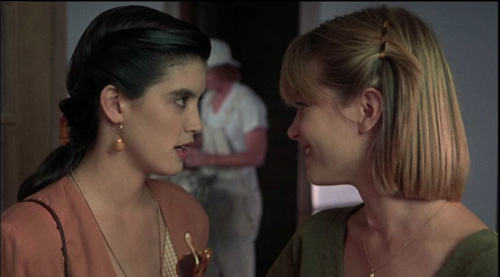
BOILING POINT
** (Worth seeing)
Directed and written by James B. Harris
With Wesley Snipes, Dennis Hopper, Lolita Davidovich, Viggo Mortensen, Seymour Cassel, Jonathan Banks, Christine Elise, and Valerie Perrine
BODIES, REST & MOTION
** (Worth seeing)
Directed by Michael Steinberg
Written by Roger Hedden
With Phoebe Cates, Bridget Fonda, Tim Roth, Eric Stoltz, Alicia Witt, Sandra Lafferty, and Sidney Dawson.
At least 30 or 40 years separate the sensibilities that underlie Boiling Point and Bodies, Rest & Motion, two current releases I suspect won’t be with us very long. The first, a quirky and at times oddly charming museum piece, is masquerading as a Wesley Snipes action thriller, but advertising — even wall-to-wall — isn’t everything. The writer-director, James B. Harris, who was born in 1928, produced the first three important Stanley Kubrick features — The Killing (1956), Paths of Glory (1957), and Lolita (1962) — and what’s most distinctive about this movie is its bittersweet aroma of 50s nostalgia and over-the-hill desperation, most of it wafting around a pathetically cheerful con artist called Red Diamond (Dennis Hopper) who’s simply trying to stay alive.
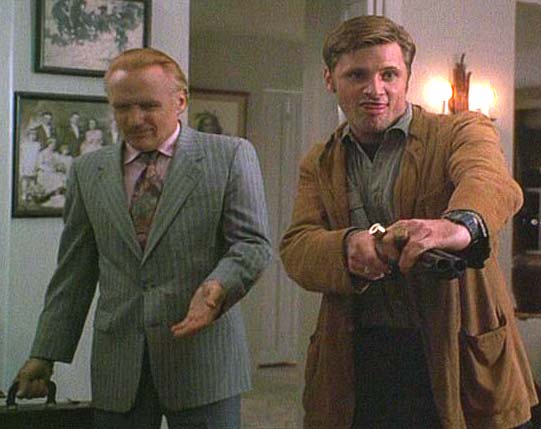
There’s desperation aplenty in Bodies, Rest & Motion as well, but not the sort that has the weight of lived experience — or even the relative weightlessness of recollected innocence. Read more
From the Chicago Reader (December 2, 1988). — J.R.
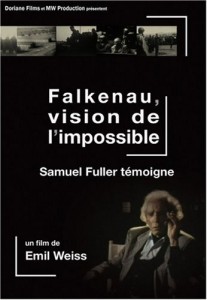

The very first film ever shot by the great American director Samuel Fuller was an amateur effort: as a U.S. army officer he filmed the liberation of a Nazi death camp in Czechoslovakia. French filmmaker Emil Weiss had the excellent idea of reviving this footage, getting Fuller to comment on it, and showing us various relevant locations in Europe today. Fuller’s commanding presence — as a speaker, thinker, and moral conscience — makes this an unforgettable and indelible experience. On the same program with this new short feature is a 1944 Nazi film I haven’t seen but that sounds like the most horrifying film ever made: Kurt Gerron’s The Fuhrer Gives a City to the Jews. A fake documentary produced by the Third Reich as propaganda, the film fabricates an image of Jews living and working happily in a model city. In fact, the film was made by Jews — virtually or literally at gunpoint — and, after it was finished, the director and cast were exterminated in Auschwitz. Fuller’s statement in Falkenau stresses the necessity of remembering the truth of the death camps today, and of denouncing the lies and fabrications of earlier and more recent Nazi apologists, the most chilling evidence of which would seem to be offered in this propaganda feature. Read more
From the March 1978 American Film, when Hollis Alpert was still the editor. If memory serves, this was my first contribution to this magazine. I suspect that the not-quite-accurate title wasn’t mine; like American Film and its parent organization, the American Film Institute, its agenda tends to be needlessly and provincially restricted to American industrial product, unlike those of, say, the British Film Institute or the Cinémathèque Française.
One important informational update: David Meeker’s invaluable reference book has more recently been expanded into an even more invaluable online reference tool that can be accessed here. — J.R.
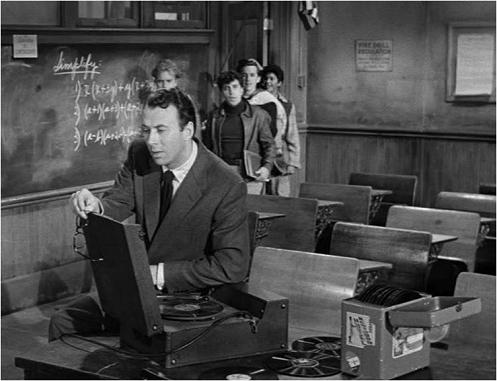
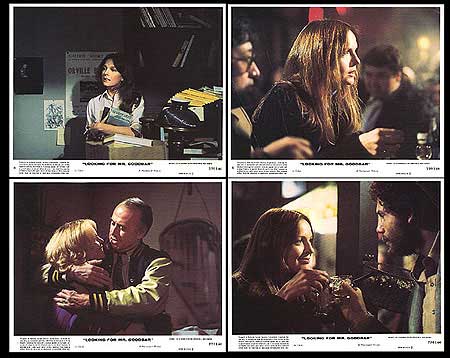
Cuing the audience into the threat of impending violence in Blackboard Jungle (1955) and Looking for Mr. Goodbar (1977), director Richard Brooks has very different aces up his sleeve. In the earlier film, he uses jazz — a blaring, evil-sounding Stan Kenton record. It’s played on a jukebox by Josh (Richard Kiley), a mild-mannered jazz buff and schoolteacher, who is mugged by a gang in an alley while the song is still playing. In the more recent film — where, incidentally, Richard Kiley plays the heroine’s bombastic father — Brooks uses disco singles blasting away in bars, and a strategically placed strobe light. Read more
From the Chicago Reader (July 12, 2002). — J.R.

Road to Perdition
** (Worth seeing)
Directed by Sam Mendes
Written by David Self
With Tom Hanks, Paul Newman, Tyler Hoechlin, Daniel Craig, Jude Law, Stanley Tucci, Jennifer Jason Leigh, Dylan Baker, and Liam Aiken.
It’s based on a graphic novel, which automatically precludes charges of arty pretension — something we all know is found only in literary works and foreign films, not Hollywood movies and comic books. It aims to do for Irish-American crime in the midwest what the Godfather trilogy did for Italian-American crime on the east coast (it uses Rembrandt lighting and fancy period decor, and it aims to be a grand metaphor for the American experience and family ties in general). It offers an array of primed-for-Oscars performances, two of them by former Oscar winners (Tom Hanks and Paul Newman). It recounts a classic tale of revenge, a classic coming-of-age story, and a classic account of bonding between fathers and sons. It dishes up gobs of carefully choreographed, deliberately excessive violence and bloodshed, and then, in the 11th hour, repudiates both — which calls to mind a touchstone like Bonnie and Clyde, as does its populist celebration of Good Country People. Read more








